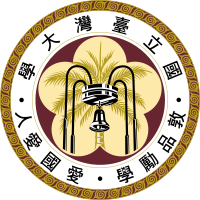【宏觀視野】The Monograph – An Old-Fashioned Publication Forum or An Ultimate Scholarly Achievement?


Sari Kivistö Sami Pihlström
Helsinki Collegium for Advanced Studies, University of Helsinki
Writing and publishing are, arguably, the most important things academics do – for the obvious reason that the results of science and scholarship must be made public in order for them to be subordinated to critical discussion. It is only through such discussion that any results of research can claim the status of academic knowledge. Furthermore, it is generally agreed that university teaching ought to be based on original research. Publishing thus lies at the center of all academic activities – research, education, and societal interaction. Without reliable practices of academic publishing, the entire system of science and scholarship, as we know it, would collapse.
The monograph is of course only one form of scientific, academic, and/or scholarly communication among many. We may characterize the monograph as an original book-length scholarly study of a focused and unified theme, topic, or issue, with a (broadly) narrative chapter structure, authored by one or several scholars, who may have distinctive special roles within the publication while sharing a joint authorship. All monographs are books (printed either traditionally on paper or made available electronically), but, clearly, not all books are monographs. The monograph differs from journal articles and chapters in collected volumes in its scope and length. Typically, monographs are at least 100 pages long, and in most cases longer – in some cases significantly longer. The monograph allows the scholar to develop an idea or an argument in considerable length and detail. The monograph is not just a large-scale article; it is a different way of approaching a scholarly issue.
Moreover, the monograph differs from the collection of articles – even from a collection of articles authored by one and the same person. The basic difference is that articles, even when collected into a single volume authored by the same scholar, are self-contained in a sense in which monograph chapters are not. Clearly, the monograph must be distinguished from the textbook. The latter is written primarily for students and intended to be used in the classroom. The former is written primarily for a community of other scholars, that is, to the author’s academic peers. Finally, the monograph differs from the general non-fiction book, even though monographs and non-fiction books can address similar topics and even use relatively similar narrative techniques. Again, the boundary may be unclear in some cases, especially in academic fields that are also of interest to wider audiences (such as history, cultural studies, or religious studies).
Generally, monographs are academic publications, primarily written for an audience of recognized experts in the field. The primary purpose of a monograph is to formulate a genuinely novel idea, thought, or argument to an academic community whose key goal is the systematic and critical search for new knowledge.
The significance of the monograph: usefulness and creativity
Today, academics – young academics in particular – are increasingly encouraged to publish the results of their research in high-impact journals. These developments are in many ways positive, and there can be no denying of the importance of journal article for the dissemination of new scientific and academic knowledge. Leading journals in all academic fields undeniably publish first-rate work that significantly advances human learning and understanding. However, the leading journals may also be, and in many cases are, mainstream journals. It may be difficult to really present essentially novel scientific or scholarly ideas in such publishing forums. In some cases, the monograph form is truly needed to present genuinely original and creative research ideas.
The long perspective of the monograph ought to be taken very seriously. The basic mission of universities, and scholarship generally (with a perspective of several centuries) should not be buried under the more and more widespread business-like demands of immediate “impact” and relevance in the contemporary academia. This is one reason why scholars, especially in the humanities and social sciences, still ought to be encouraged to publish monographs in addition to (not instead of) journal articles. The special and irreducible value of the monograph in comparison to all other forms of producing academic knowledge ought to be recognized by the academic community, as well as those who provide its funding. We should definitely not give up monographs, nor should we too dramatically redefine their tasks in the contemporary academic world (e.g., by reducing them to mere textbooks or popular books); on the contrary, we should appreciate the irreducible plurality of academic publishing, realizing that merely producing immense numbers of journal articles will not compensate for the lack of publishing deeply reflective, narratively argumentative, unified yet comprehensive studies on issues that are too substantial to be adequately dealt with in a single article, however intelligent and impact-producing.
It might still be asked what’s the use of publishing monographs. How are they useful, if they are? The impact of journal articles may be much greater, and monographs are typically rather slow to get written and thus also slow to reach their intended academic audience. Given the increasing expectations of efficacy, usefulness, and relevance, the humanities and the social sciences – perhaps more than the more obviously instrumentally valuable and socially relevant natural and medical sciences – constantly need to consider the “value” or “benefit” they are able to produce for the environing society. While this concern has always been relevant to scholars writing monographs, this form of academic publishing can be said to primarily advance basic research that is not necessarily expected to directly benefit society but is primarily motivated out of purely academic interests. The scholar who is writing a monograph should primarily seek the truth – pursuing critical discussion and reflection – instead of practical utility, even though her/his research results may turn out to be strongly relevant to society. Research in the humanities, in particular, is a value in itself, and it may be “useful” or “beneficial” in highly unexpected ways. Indeed, best research in these fields can demonstrate that the dichotomy between “intrinsic value” and “instrumental value” is often extremely misleading.
At the same time, it is important to continue critical discussion of what can be meant by “usefulness” in this context. This issue has been on the agenda of not only the Helsinki Collegium for Advanced Study but of all institutes for advanced study since the beginning: when the internationally leading institute of this kind, the Institute for Advanced Study (IAS) in Princeton, New Jersey, was established in 1930, its founders argued that basic research pursued not out of any immediate concerns for usefulness but out of pure intellectual curiosity turns out to be the most “useful” in the long run. We may refer back to the words of the first director of the Princeton IAS, Abraham Flexner, who urged the then newly founded institution to be “a free society of scholars – free, because mature persons, animated by intellectual purposes, must be left to pursue their own interests in their own ways”. In his 1939 essay, “The Usefulness of Useless Knowledge”, Flexner further argued that institutions of higher learning are the more likely to contribute to human welfare the less they are “deflected by considerations of immediacy of application”. This spirit still animates not only the IAS but the practice of writing, publishing, and reading monographs in the scholarly communities that exist today.[1]
Consider, by way of comparison, the Aristotelian account of the good life (or happiness, eudaimonia): it is a combination of a number of different elements, such as, e.g., the satisfaction of basic needs such as food and shelter, health and material resources (to some reasonable degree), social status and relations, family and friends, and so forth. If some of these is missing – if, for instance, a person is otherwise “well” but does not have any friends – the elements of good life that are well satisfied in that person’s life cannot compensate for the missing element (in this case, friends). Similarly, the multitude of academic publication channels ought to be celebrated, but not at the cost of sacrificing one of the most highly regarded traditional ways of publishing, that is, the monograph. The other ways of publishing cannot take its place without significantly impoverishing academic research.
It is, moreover, part of academic freedom – which should be maintained as a core value at any university, independently of different national and (inter)disciplinary contexts – to respect the publishing practices of different individuals and research fields. A junior scholar growing into academic maturity in the human sciences can be expected to produce an international monograph in order to fully enter her academic field; however, in special areas (e.g., within such sub-fields of philosophy as logic and philosophy of science), it is much more common nowadays to publish journal articles, and even leading researchers may not publish monographs. Many have worried that natural-scientific habits of research and publishing spread into the humanities and that advanced bibliometrics will have devastating effects on publishing in our fields. Such worries are understandable; it is, however, up to us ourselves as scholars, colleagues, and reviewers to determine whether the future of academic publishing will be a nightmare or will encourage genuine plurality and freedom. [2]
In defence of the monograph
In recent decades, the crisis or even the death of the scholarly monograph has been frequently an issue in the discussions of the future of academic publishing. Those who don’t like monographs call them highly specialized, short-run books that are targeted at small specialized audiences of scholars, and therefore cannot survive. The monograph has been called a luxury that society can no longer afford. On the other hand, in the humanities monographs (but also edited books) are still the most common type of publication. Monographs can be defended on the basis that they form a fundamental and traditional form for recording the results of scholarly inquiry. Some traditions are simply fundamental in the academic world, and being the heart of academic publishing and as old as academy itself the monograph must remain an essential part of academic publishing. And even more, in the midst of rapid changes and superficial knowledge, the stability, depth and slowness of the monograph and the deep thinking it requires are needed even more than before. The monograph allows the researcher to discuss issues that have long-lasting meaningfulness and that can at best be read by several succeeding generations.
One argument against falling print runs and declining sales could be that the best and most original research is not read by masses, so why should scholars and academic presses search for big audiences? Humanistic or other academic research is sometimes blamed as being a cloistered type of knowledge addressed only to a privileged few. But one could claim that the most original research, which we should support by all means, is usually, perhaps always, written to a small audience. Monographs are based on the results of years of reflection, studying and trying to understand a complicated problem. The monograph allows the scholar to develop complex arguments in an entirely different way than any other publication type or more popular forms of academic publishing. Best monographs do not merely reproduce old knowledge, as has sometimes been stated, but they push a discipline forward and include risky potential that is not merely the domain of new digital projects.
While writing monographs often relies on intellectual motivations, its value has also been assessed in career-related terms. Some research has been done on the role of the monograph in academic appointments, and it seems that the monograph is still of great value in the humanities and social sciences for tenure and career progression. The monograph remains a major achievement in a scholar’s career and serves the purposes of academic promotion. While speed is not a key criterion in traditional academic monograph publishing, it is increasingly a requirement that young scholars in particular need to take into account. When a post-doctoral researcher, for instance, is busily building up her academic career, she cannot just sit down and spend a decade writing a monograph. If she does, she may lose vital job opportunities. There are thus inevitable tensions regarding time in academic publishing – tensions between the needs of fast publishing, on the one side, and the need to think carefully, without hurry, about difficult problems, on the other side – no matter which publishing practices one primarily prefers.
The virtues of traditional monograph narrative?
One of the main advantages of traditional monographs is that they involve a serious effort of interpreting, analysing and structuring a complex content. Monographs are not offering mere content that could be easily replaced by more efficient forms of content delivery. Rather, they offer insights. At least some of us still long for such deep and serious insights that can only be offered by single authors who have been trying to understand a complex problem for years. (And even if only some, or relatively few, of us do, that is still valuable.) Knowledge in this sense is more than mere data or information, but it involves attempts to provide theories and arguments which will help us understand complex phenomena which can only be addressed in the form of an extended text. Monographs can also make original discoveries about the world and elaborate on these discoveries in detail. We could argue that there is something very fundamentally human precisely in the singularity of perspective that the monograph entails: the singularity of perspective is ultimately based on the finitude of human life as we know it.
Stanley Fish has some years ago argued that those who think that the digital form will liberate us as writers and readers from the linear and temporal medium are actually relying on a theological vision. According to this religious and digital vision, the new forms of communication will create knowledge that is not produced by a limited human being; instead, these new forms take us “into a spatial universe where knowledge is everywhere available in a full and immediate presence to which everyone has access as a node or relay in the meaning-producing system” (Fish 2012). In this new system, “the self exchanges its limited, fallen perspective for the perspective (not a perspective at all) of union with deity, where there is no distance between the would-be knower and the object of his cognitive apprehension because, in Milton’s words, everyone and everything is ‘all in all’.” This vision aims to challenge one fundamental feature of human beings – mortality. Human beings are not capable of going on without end, and this limited nature also characterizes human knowledge, but the digital vision – at least in its extreme forms – relies on an opposite notion, namely, that there is mere movement and expansion, no beginning or end.
As John B. Thompson (2005) has argued, narratives and monographs require an extended period of time and patience to read. Although monographs can also be read selectively and by using indices for browsing, perhaps the experience of reading a whole single text can offer such complete views that become valuable in an age in which information is offered in small bits and pieces of data. Reading books of course presupposes that scholars still must have enough time to read comprehensive extended texts that require immersion and a real intellectual engagement. Therefore, academic institutions cherishing the most traditional core values of universities, such as institutes for advanced study, may become increasingly important in the future as contexts within which monograph publishing can still flourish. The key purpose of institutes for advanced study is, precisely, to give their (typically very rigorously selected) fellows free time for penetrating, self-directed, long-term research that does not seek to avoid thinking as deeply and carefully as possible about the most difficult problems there are.
When writing and publishing a monograph, a scholar is not just reporting the results of her research. She is, much more profoundly, opening a unique individual and personal perspective on the world she is studying, showing how the world can be viewed from such a perspective that no one else occupies. In this sense, the monograph has not only a scholarly but (we might say) an existential function. It shows its readers how the world – in some specific respect – appears to someone with a deep concern to understand it.
Bibliography
[1] For discussions of the usefulness of useless knowledge in Flexner’s spirit, see Wittrock (2002) and Pihlström (2011).
[2]This view is defended in some more detail in Pihlström (2014). Cf. Holm et al. (2014) for a recent report on the status of the humanities.
Fish, Stanley 2012. “The Digital Humanities and the Transcending of Mortality.” The New York Times, 9 Jan 2012. See: http://opinionator.blogs.nytimes.com/2012/01/09/the-digital-humanities-and-the-transcending-of-mortality/?_r=1.
Holm, Poul, Jarrick, Arne, & Scott, Dominic 2014. Humanities World Report 2015. Basingstoke: Palgrave.
Pihlström, Sami 2011. “Enhancing Scholarly Excellence in an Interdisciplinary Environment: Remarks on the History and Future of the Helsinki Collegium for Advanced Studies”, Helsinki Collegium for Advanced Studies Newsletter 5:1 (also available online at www.helsinki.fi/collegium).
Pihlström, Sami 2014. “Academic Publishing and Interdisciplinarity: Finnish Experiences”, Human Affairs 24.
Thompson, John B. 2005. Books in the Digital Age. Cambridge: Polity.
Wittrock, Björn 2002. “Institutes for Advanced Study: Ideas, Histories, Rationales”, Keynote Speech on the Occasion of the Inauguration of the Helsinki Collegium for Advanced Studies (updated version, 2011).



